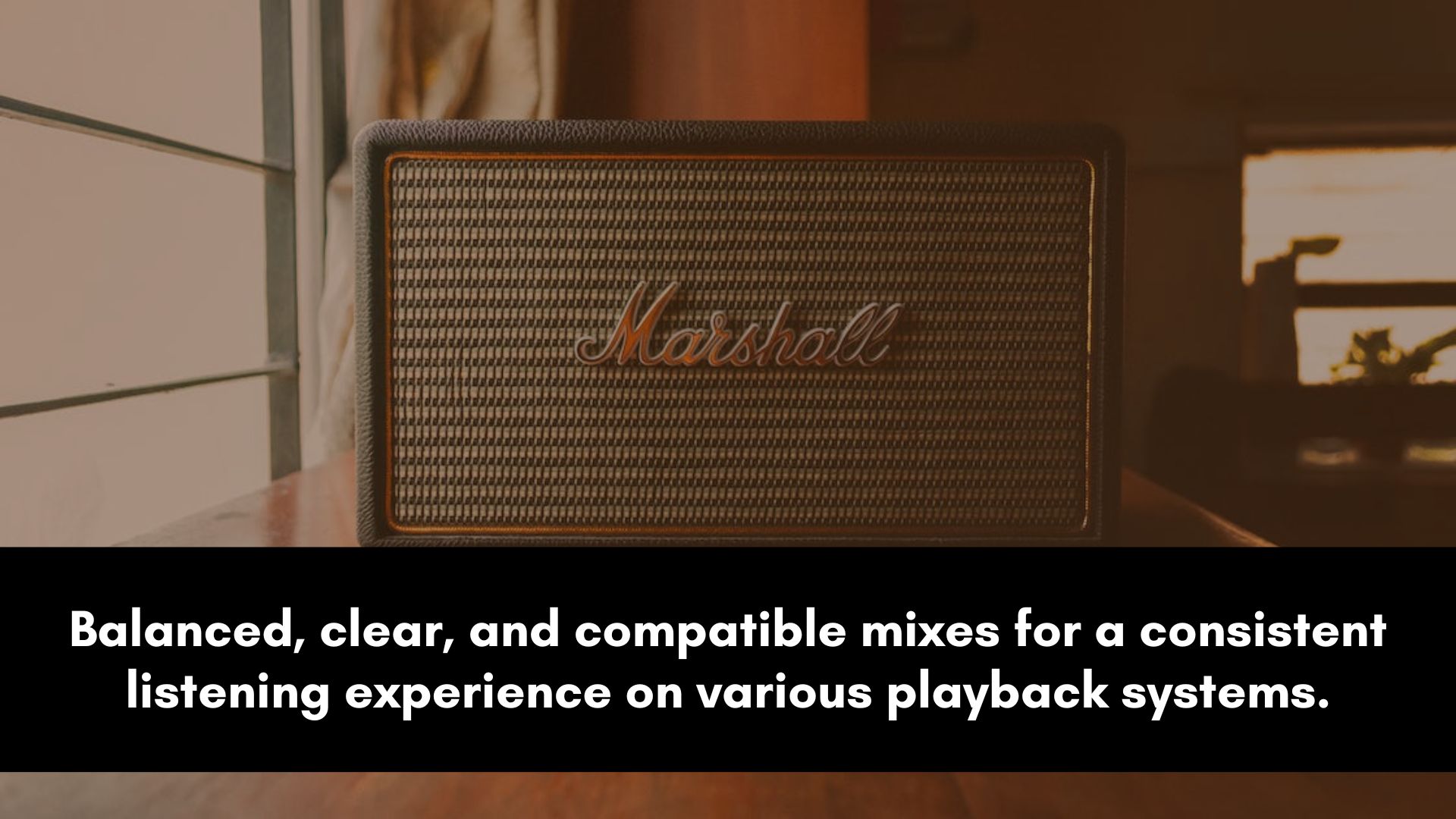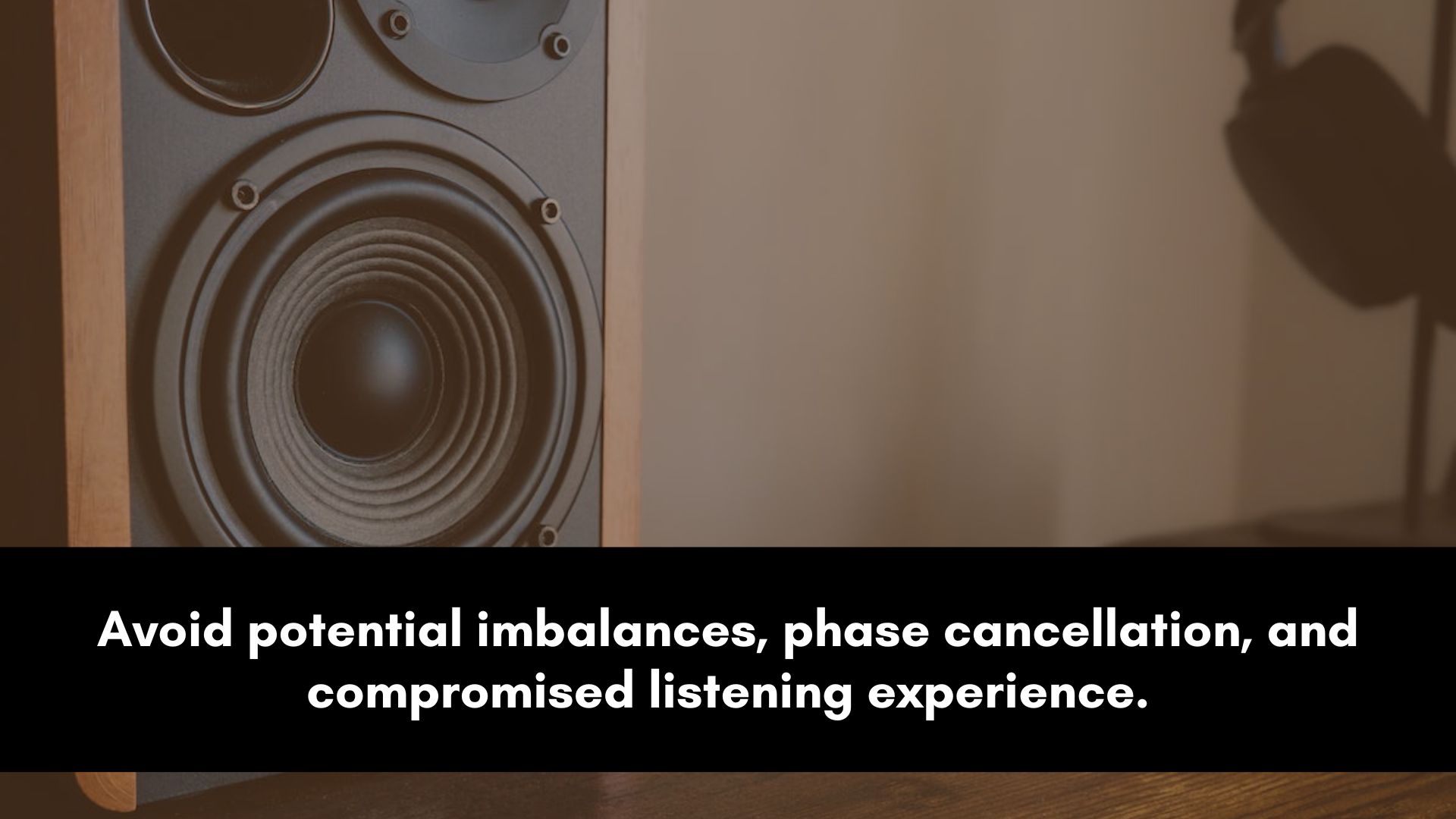Unleash the power of mono!
Discover the secrets behind mixing in mono for unparalleled clarity in your audio productions.
In this blog post, we delve into the fascinating world of mono mixing and explore how it can elevate the quality of your sound.
From panning and balance to equalization and dynamics processing, we'll unveil the secrets behind achieving crystal-clear mixes.
Benefits of Mono-Compatible Mixes

Mono-compatible mixes offer several notable benefits for audio engineers and music producers.
Let's explore these advantages in detail:
Improved Clarity
When comparing mixing in stereo vs mono, opting for mono allows you to prioritize the crucial aspects of your mix without being influenced by stereo imaging distractions.
By collapsing your mix to mono, you eliminate the spatial effects and can concentrate more on the tonal balance, dynamics, and overall clarity of each element.
This is particularly useful when working with complex arrangements or dense mixes, where it can be challenging to hear individual elements clearly.
It also helps you identify and address any masking issues, ensuring that each instrument and vocal occupies its own space in the frequency spectrum.
Compatibility
In the world of audio playback, not all systems are equipped with stereo capabilities.
There are still mono playback systems in use, such as older radios, portable speakers, phones, or club sound systems.
By mixing in mono, you ensure that your mix will sound consistent and balanced on these mono playback systems.
It prevents any unintended phase cancellations or imbalances that may occur when playing a stereo mix on a mono system.
This compatibility is crucial for reaching a wider audience and ensuring that your music translates well across various listening environments.
Enhanced Focus on Balance
Mixing in mono forces you to pay more attention to the balance between different instruments and vocals.
Without the spatial cues of stereo panning, you need to rely on volume levels, EQ, and other processing techniques to create separation and balance.
This heightened focus on balance can lead to a more coherent and well-rounded mix overall.
It helps prevent elements from clashing or overpowering each other, resulting in a more professional and polished sound.
Now that you understand the benefits, let's dive into practical techniques.
Techniques for Mixing in Mono

To achieve the best results when mixing in mono, consider implementing the following techniques:
a. Panning and Balance
In mono, panning plays a crucial role in creating a sense of balance and spatial placement.
For most elements in your mix, it's best to keep them panned to the center.
This ensures that the mono mix remains balanced, with all the elements sitting right in the middle.
Instruments like vocals, bass, kick drums, and snare drums work well in the center, providing a solid foundation for the mix.
While most elements are centered, you can introduce subtle panning variations for select instruments to create a sense of stereo width.
Instruments like guitars, keyboards, and background vocals can be slightly panned left or right to add a spacious feel.
However, it's important to be cautious with this technique, as excessive panning can lead to imbalance and potential phase cancellation when collapsed to mono.
In mono mixing, it's best to avoid hard panning any element completely to one side.
Hard-panned instruments can create an unbalanced mix, making it difficult for listeners to perceive the different elements clearly.
Instead, focus on achieving a well-rounded balance across the stereo field.
b. Equalization (EQ)
Equalization (EQ) is a powerful tool when mixing. It allows you to shape the tonal balance and clarity of individual elements.
Start by carving out space for each element in the frequency spectrum.
Identify clashing frequencies and use EQ to reduce the overlap, helping elements sit well together in the mono mix.
Pay special attention to the midrange frequencies, which are crucial for instrument and vocal clarity.
Boost or cut as needed, but avoid excessive changes that can create an unnatural or unbalanced sound.
Remember, adjustments made in stereo may not translate perfectly to mono.
Regularly check your mix in mono and make necessary adjustments for a balanced and cohesive sound.
When applying EQ to stereo effects like reverbs or delays, consider their impact in mono.
Some stereo effects may lose their impact or become less pronounced.
Experiment with mono-compatible effects or adjust settings for a cohesive mono image.
Sculpt the frequency spectrum of each element, ensuring harmonious cohesion.
c. Dynamics Processing
Here are some practical techniques to apply dynamic processing effectively.
One key tool for dynamic control is compression.
Use compression to even out the dynamic range of instruments and vocals, ensuring they blend well together.
Set an appropriate threshold and adjust the ratio to achieve a natural and balanced sound.
Be careful not to over-compress, as it can squash the life and naturalness of your mix.
Another important aspect is using automation to ride the faders.
This technique involves manually adjusting the volume levels of specific elements throughout the mix to maintain a consistent balance.
It can help bring out important parts and ensure they're heard clearly in different sections of the song.
When working with stereo effects like reverbs or delays, be mindful of their impact on the mono image.
Adjust the settings or use mono-compatible alternatives to maintain a cohesive mono soundstage.
Listen critically and make adjustments based on what best serves the song.
d. Effects and Spatialization
It's essential to consider the effects and spatialization techniques you use to enhance the depth and dimension of your mix.
When utilizing effects, be mindful of their impact on the mono mix.
Some stereo effects, such as wide reverbs or expansive stereo delays, may become less pronounced when collapsed to mono.
Instead, focus on using effects that are mono-compatible or have a mono option, ensuring they translate well to the mono soundstage.
Experiment with mono-compatible reverbs and delays to add depth to your mix.
These effects can provide a sense of space without compromising mono-compatibility.
By implementing these techniques, you can leverage effects, providing an immersive listening experience that captivates your audience.
e. Monitoring and Reference Tracks
Monitoring your mix accurately and using reference tracks are vital steps in achieving a high-quality mono-compatible mix.
First and foremost, invest in reliable studio monitors or headphones that provide accurate and transparent sound reproduction.
This ensures that you can hear the nuances and details of your mix accurately.
Regularly switch your monitoring system to mono during the mixing process.
This allows you to catch any phase cancellation issues, imbalances, or masking problems that may arise when collapsed to mono.
Pay attention to the overall tonal balance, stereo width, and presence of each element when listening in mono.
Utilize reference tracks mixed in mono as a benchmark for your mix.
Choose reference tracks that have a similar genre, instrumentation, and sonic characteristics to your mix.
Compare your mix to these references, focusing on tonal balance, dynamics, and overall impact.
Use the reference tracks as a guide to make necessary adjustments and ensure your mix aligns with industry standards.
These practices help you make informed decisions and refine your mix to meet industry standards.
FAQ:
Why does my mix sound weird in mono?
When your mix sounds weird in mono, it's often due to phase cancellation and improper use of stereo effects.
Phase cancellation occurs when opposing audio signals interact, leading to imbalances.
This can result in imbalances and elements disappearing.
Improper use of stereo effects can also contribute to the issue, as they may become muddied when collapsed to mono.
Additionally, mono-compatibility problems arise when elements with significant stereo information are not properly balanced.
To address these concerns, regularly check your mix in mono, adjust element placement and balance, and ensure stereo effects enhance the mono mix.
Should a mix sound good in mono?
Yes, a mix should sound good in mono, despite stereo mixes being the preferred listening mode for many.
The reason for this is that mono playback systems are still prevalent, and not all listeners have access to stereo setups.
Therefore, ensuring that your mix translates well to mono is essential for a consistent and enjoyable listening experience across different devices and environments.
When a mix sounds good in mono, it means that the elements are well balanced, the instruments and vocals are clearly audible, and the overall tonal balance remains intact.
How should your mix sound in mono?
In mono, your mix should sound balanced, cohesive, and clear.
The goal is to ensure that all elements of your music are audible and well-defined when collapsed into a single channel.
Essential instruments and vocals should be centered and have a distinct presence, without any phase cancellation issues.
The tonal balance should remain intact, with no excessive frequency masking or imbalance.
The mix should sound great regardless of the listener's equipment or setup.